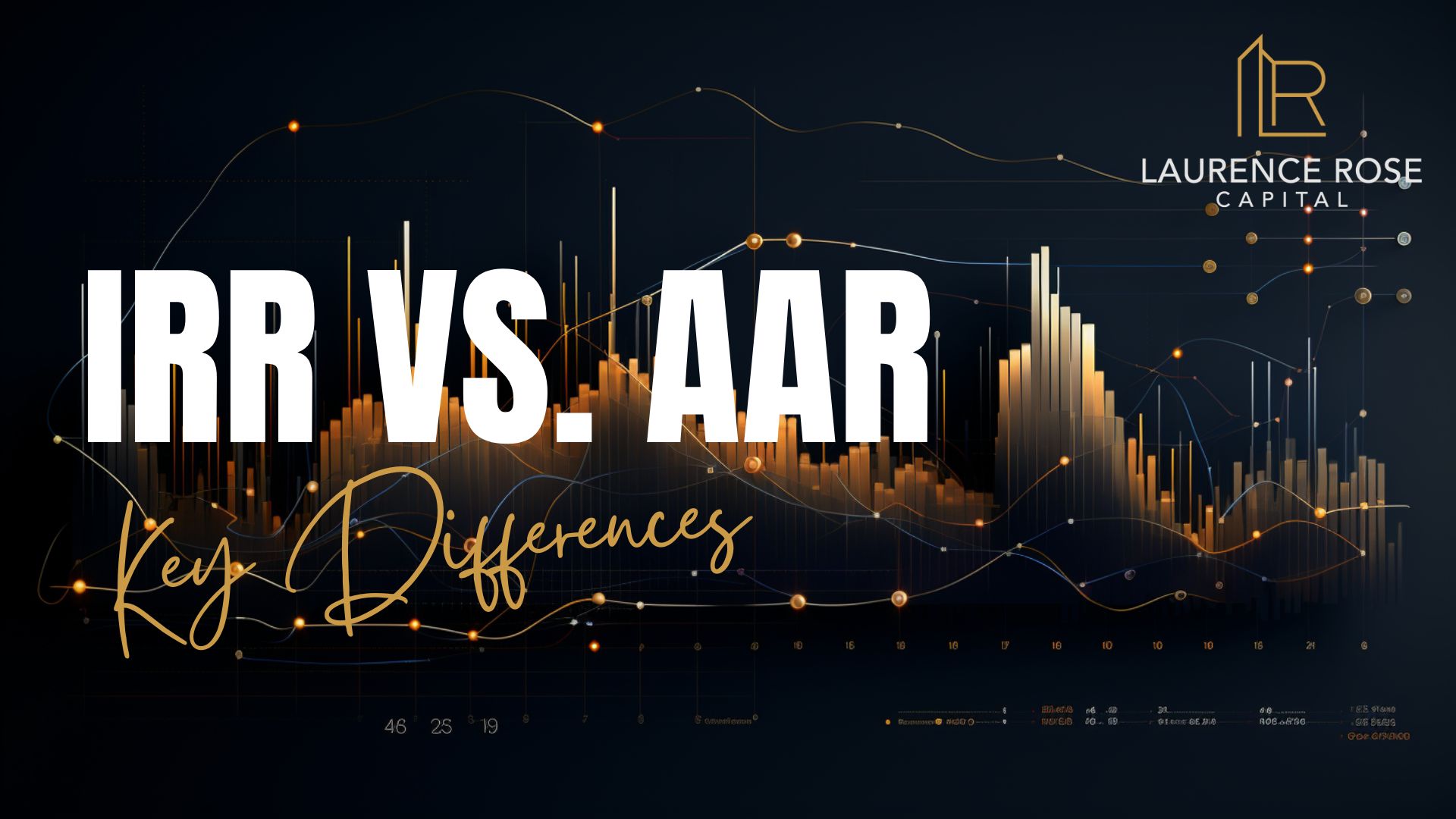When it comes to investment decisions, it’s crucial to have a clear understanding of various metrics and ratios to assess the potential profitability and risks associated with different investment options. Two such essential metrics are Internal Rate of Return (IRR) and Average Annual Return (AAR). Both IRR and AAR are used to evaluate the performance of investments, but they have distinct characteristics and are suitable for different purposes. In this article, we’ll explore the differences between IRR and AAR, their applications, and how investors can use them to make informed choices.
Table of Contents
Understanding IRR
- Definition and Formula
- How to Interpret IRR
- Advantages of IRR
- Limitations of IRR
Exploring AAR
- Definition and Calculation
- The Significance of AAR
- AAR vs. CAGR (Compound Annual Growth Rate)
When to Use IRR
- Long-Term Investment Projects
- Evaluating Risky Ventures
- Capital Budgeting Decisions
When to Use AAR
- Short-Term Investment Analysis
- Performance Evaluation of Mutual Funds
- Comparing Stable Investment Options
Comparing IRR and AAR
- Varied Time Horizons
- Accounting for Cash Flow Patterns
- The Impact of Reinvestment Assumptions
Pros and Cons of IRR and AAR
- IRR Pros
- IRR Cons
- AAR Pros
- AAR Cons
Combining Metrics for Comprehensive Analysis
- Integrating IRR and AAR in Decision Making
- Understanding Risk-Adjusted Returns
Key Differences and Use Cases
- Choosing the Right Metric
- Investment Strategies for Different Scenarios
Conclusion
1. Understanding IRR
Definition and Formula
Internal Rate of Return (IRR) is a financial metric used to determine the potential profitability of an investment over its lifespan. It calculates the discount rate at which the net present value (NPV) of all future cash flows from the investment becomes zero. Mathematically, IRR can be expressed as follows:
Insert IRR Formula
How to Interpret IRR
A high IRR indicates that the investment is potentially lucrative, as the rate of return is greater than the cost of capital. Conversely, a low or negative IRR suggests that the investment may not yield satisfactory returns.
Advantages of IRR
IRR offers several advantages to investors. It considers the time value of money and accounts for the timing of cash flows, providing a more accurate picture of an investment’s profitability. Additionally, IRR enables easy comparison between different investment options.
Limitations of IRR
While IRR is a valuable metric, it does have some limitations. For instance, it assumes that cash flows generated from an investment will be reinvested at the same IRR, which may not always be feasible or practical. Furthermore, IRR may not be suitable for projects with unconventional cash flow patterns.
2. Exploring AAR
Definition and Calculation
Average Annual Return (AAR) calculates the average rate of return of an investment over a specific period. It is a simpler metric than IRR and is often used for short-term investment analyses. AAR can be calculated as follows:
Insert AAR Formula
The Significance of AAR
AAR provides a straightforward representation of an investment’s historical performance. It is especially useful for assessing the stability of investment options, such as mutual funds, over a specific timeframe.
AAR vs. CAGR (Compound Annual Growth Rate)
AAR and CAGR are both used to measure investment returns, but they differ in their approach. While AAR considers the average return over a period, CAGR smooths out the volatility by assuming a constant rate of growth.
3. When to Use IRR
Long-Term Investment Projects
IRR is well-suited for evaluating long-term projects where the timing of cash flows is critical. By considering the time value of money, IRR helps investors assess the feasibility of lengthy ventures.
Evaluating Risky Ventures
Investors often encounter high-risk projects with uncertain cash flow patterns. IRR aids in evaluating such ventures and determining whether the potential rewards outweigh the risks.
Capital Budgeting Decisions
When making capital budgeting decisions, such as whether to invest in new equipment or expand operations, IRR can guide investors by presenting the expected returns.
4. When to Use AAR
Short-Term Investment Analysis
AAR is more appropriate for short-term investment analyses, especially when investors want a quick overview of historical performance.
Performance Evaluation of Mutual Funds
Investors frequently use AAR to evaluate the performance of mutual funds over specific periods.
Comparing Stable Investment Options
AAR is beneficial when comparing stable investment choices with relatively consistent returns.
5. Comparing IRR and AAR
Varied Time Horizons
The most significant difference between IRR and AAR lies in their time horizons. IRR considers the entire lifespan of an investment, while AAR focuses on average annual returns within a specified timeframe.
Accounting for Cash Flow Patterns
IRR takes into account the timing of cash flows, making it suitable for investments with irregular cash flow patterns. In contrast, AAR only considers the average returns, overlooking the timing aspect.
The Impact of Reinvestment Assumptions
IRR assumes that cash flows will be reinvested at the same rate, while AAR does not consider reinvestment. This can lead to different conclusions about an investment’s performance.
6. IRR vs. AAR
IRR Pros
- Accounts for timing of cash flows
- Allows comparison between investments
- Considers time value of money
IRR Cons
- Unrealistic reinvestment assumptions
- Unsuitable for projects with unconventional cash flow patterns
AAR Pros
- Simple to calculate and understand
- Useful for short-term performance evaluation
- Suitable for stable investment comparisons
AAR Cons
- Ignores timing of cash flows
- Not ideal for long-term investment assessments
7. Combining Metrics for Comprehensive Analysis
Integrating IRR and AAR in Decision Making
To make well-informed investment decisions, investors can use both IRR and AAR together. By
combining these metrics, they can gain a comprehensive understanding of an investment’s potential.
Understanding Risk-Adjusted Returns
It’s essential to account for the risk associated with an investment. By analyzing risk-adjusted returns, investors can weigh the potential gains against the inherent risks.
8. Key Differences and Use Cases
| Metric | IRR (Internal Rate of Return) | AAR (Average Annual Return) |
|---|---|---|
| Definition | A financial metric calculating the discount rate at which the net present value of all future cash flows from the investment becomes zero. | A simple metric calculating the average rate of return of an investment over a specific period. |
| Time Horizon | Considers the entire lifespan of the investment. | Focuses on average annual returns within a specified timeframe. |
| Cash Flow Timing | Accounts for the timing of cash flows. | Ignores the timing of cash flows. |
| Suitable for | Long-term investment projects and risky ventures. | Short-term investment analysis and evaluating stable investment options. |
| Application | Evaluating long-term projects and capital budgeting decisions. | Assessing short-term performance and comparing stable investment choices. |
| Advantages | Considers time value of money, allows comparison between investments. | Simple to calculate and understand. |
| Limitations | Unrealistic reinvestment assumptions, unsuitable for projects with unconventional cash flow patterns. | Ignores timing of cash flows, not ideal for long-term investment assessments. |
Choosing the Right Metric
Selecting the appropriate metric depends on the nature of the investment and the specific evaluation requirements. Long-term projects may benefit from IRR, while AAR is suitable for shorter-term analyses.
Investment Strategies for Different Scenarios
Various investment scenarios call for different strategies. By understanding the nuances of IRR and AAR, investors can tailor their approaches accordingly.
Conclusion
In conclusion, both IRR and AAR are essential metrics for evaluating investment opportunities, but they serve different purposes. IRR considers the timing and value of cash flows, making it suitable for long-term projects and assessing risky ventures. On the other hand, AAR provides a simple yet effective way to evaluate short-term performance and compare stable investment options.
Investors should consider both IRR and AAR in conjunction with risk-adjusted returns to make well-informed decisions. By understanding the strengths and limitations of each metric, investors can navigate the dynamic world of investments with confidence.
FAQs
1. What is the primary difference between IRR and AAR?
The main difference lies in their time horizons and treatment of cash flow timing. IRR considers the entire lifespan of an investment and accounts for the timing of cash flows, while AAR focuses on average annual returns within a specified timeframe and overlooks timing.
2. Can IRR be negative, and if so, what does it indicate?
Yes, IRR can be negative. A negative IRR suggests that the investment’s initial cash outflow is greater than the present value of future cash inflows, indicating a potential loss on the investment.
3. Is AAR suitable for long-term investment decisions?
AAR is more appropriate for short-term investment analysis, as it provides an average annual return over a specific period. For long-term investment decisions, IRR is a more relevant metric.
4. How can investors use IRR and AAR together?
Investors can use IRR and AAR together by considering their respective results and comparing them to risk-adjusted returns. This combined approach offers a comprehensive view of an investment’s potential performance.
5. Are there any drawbacks to using IRR and AAR as investment evaluation tools?
While both IRR and AAR are valuable metrics, they have limitations. IRR’s assumptions about reinvestment can be unrealistic, and AAR ignores the timing of cash flows. Investors should consider these factors when using these tools for investment analysis.







